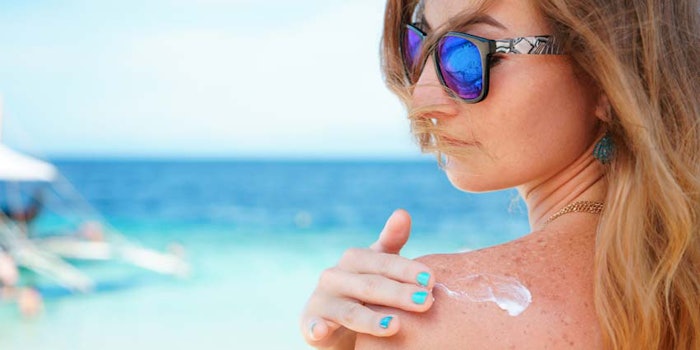
A recent review published in the Journal of Cosmetic Science explores the effects of various vehicles in distributing sunscreens on skin without penetrating or causing toxicity.
This follows the publication, in 2019, of a U.S. Food and Drug Administration (FDA) paper finding sunscreens had penetrated the bloodstream of test subjects. While that study did not cite any toxic effects, nor did part two of the study, and one industry expert called the validity of the test protocol to question, mainstream media picked up on the study, raising consumer alarm—although many media reports still urged consumers to wear sunscreen.
To identify approaches to prevent sunscreen penetration and cause for any systemic concern, these researchers carried out an extensive review to estimate the permeation behavior of various groups of UV filters and identify appropriate vehicles. Several "carriers for the future" were highlighted, such as lipid carriers, cyclodextrin derivatives, encapsulation approaches and more. Also described were non-penetrating sunscreens (NPSUNs) incorporating UV filters and jojoba oil conjugates, whose chemical backbones contain UV-absorbing moieties.
The described NPSUNs had physicochemical characteristics that maintained their presence on the upper stratum corneum and no further penetration reportedly was feasible. Octyl methoxycinnamate- (OMC or octinoxate)-containing NPSUN, in particular, demonstrated a similar UV absorption spectrum to OMC and did not penetrate skin in 24-hr in vitro permeation experiments of either neat substances, or OMC-NPSUNs in o/w and w/o creams or jojoba oil. See the complete article for additional findings.










